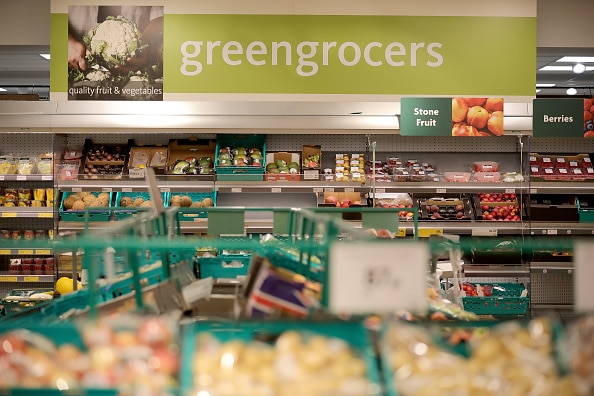Shoppers continue turning to own label groceries as yearly food bill to leap by £682

Sales of own-brand groceries shot up last month while fewer consumers forked out for a Halloween pumpkin this year, as households seek to trim down costs.
Shoppers are increasingly switching to cheaper alternatives of food essentials, as historically high levels of inflation amp up the pressure on Brits this winter, according to data from insights firm Kantar.
Own label sales leapt 10.3 per cent while the very cheapest value own label ranges saw sales swell by 42 per cent over the past four weeks.
It comes as grocery price inflation reached 14.7 per cent, the highest since Kantar started tracking the metric in 2008.
Brits are facing an extra £682 to their annual grocery bills, as well as elevated energy bills and fuel costs, causing them to adapt their shopping habits.
While just over one in 10 households picked up a pumpkin last month, sales in the run up to Halloween didn’t measure up to those of last year, Kantar found.
“Food and drink spending is generally non-discretionary so it’s not easy for shoppers to cut back the amount they buy,” Fraser McKevitt, head of retail and consumer insight at Kantar, said.
Consumers flocking to own-label products was a trend that was “still accelerating,” McKevitt said, with big grocers keen to expand their private label ranges.
Discount retailers Aldi and Lidl continued to grow their market share over the past month, as shoppers traded down to cheaper grocers in the face of the economic crunch.
Aldi took the crown of the fastest growing retailer in the four week period in October, boosting its sales by 22.7 per cent year on year to take on a 9.2 per cent market share.
Its budget rival Lidl also improved sales by 21.5 per cent to take its market share to a new record high of 7.2 per cent.
The grocery landscape has changed considerably since the 2008 financial crash, according to McKevitt, against warnings of a looming recession on the horizon.
Budget chains Aldi and Lidl now take up 16.4 per cent of the market compared to just 4.4 per cent in 2008.